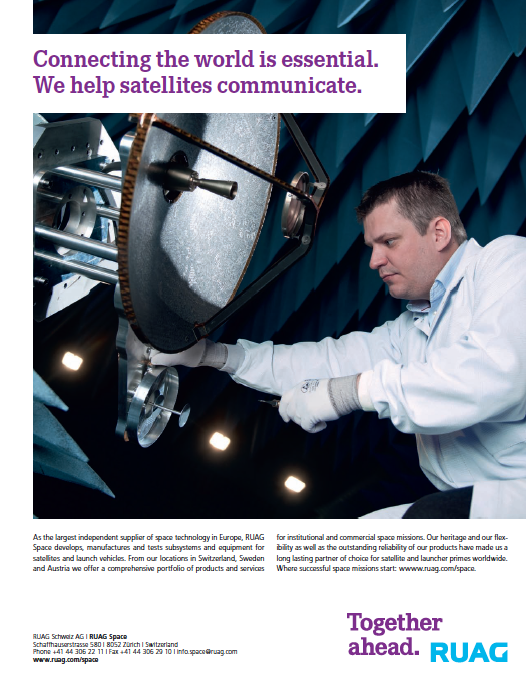High Throughput Satellites (HTS) promise to bring new opportunities to the satellite industry. However, as with any change in paradigm, there are also challenges and associated risks to the ecosystem that need to be heeded and handled. In this article, we will explore these issues from the viewpoint of the satellite operator.

Opportunities
HTS promises to bring far more capacity at much lower prices, enabling new services at higher data rates. This is possible by implementing multi-spot beam (MSB) satellite architecture, similar to cellular networks. By implementing frequency reuse, a satellite is able to provide tens of Gbps of capacity as compared to only a few Gbps of capacity possible with standard, wide-beam satellite architectures. While the higher throughput of multi spot beam satellites comes at an increased cost, it is still much lower when compared to the dramatic increase in capacity—providing a x4-x10 improvement of the cost per bit.
HTS will enable the satellite industry to grow and expand beyond what is possible today, by:
Enabling satellite to meet the growth in demand for data services; there is an insatiable demand for data, especially Internet data and current satellites simply do not have enough capacity to meet this growth. HTS will bring a ten-fold increase in capacity.
Expanding to new markets that currently could not afford to use satellite communications as the costs were just too high. The new economics of HTS will open opportunities that were not possible before.
Competing with terrestrial, which was the anathema of satellite communications, will be possible in many regions. So while fiber and high speed services will expand, there will be new opportunities for satellite even in areas where DSL services are available.
Gilat’s VSAT technology is already providing cutting-edge services, including high speed broadband, video and VoIP services over MSB and Ka-Band satellites. With experience from around the globe, Gilat is helping customers to realize business opportunities in their markets.
Challenges
The new architecture of HTS is more than ‘just’ a change in the economics of satellite communications. HTS is intrinsically different from legacy wide-beam satellites. Here are a few points to consider:
Network topology is usually hub-and-spoke; therefore HTS architecture is mostly applicable for Internet and similar cloud-based applications. The topology is fixed so traffic from a specific beam is terminated in a specific gateway. Support for applications such as cellular backhaul, or enterprise specific connectivity requires significant augmentation of the standard multi-spot beam architecture which must be planned in advance by the satellite operator. There are exceptions to this rule and some of the solutions have more flexible multi-spot beam design that enables mesh and beam-to-beam connectivity.
Coverage is obtained via many small beams that blanket the region, each with its own capacity. The architecture is optimal for unicast transmission, but it is not efficient for multicast/broadcast services. Another impact is that bandwidth cannot be shared between beams, so unused capacity in one beam cannot reduce the pressure of higher demand in other beams.
In many cases, the satellite operator needs (or chooses) to invest in VSAT technology, populating the gateways with baseband equipment for VSAT service. This is sometimes a strategic decision of the satellite operator to ‘move up the value chain’ and offer additional services. The main drive in many cases is a pragmatic decision, to enable lower barriers of entry for local ISPs and resellers to offer the satellite broadband services.
All of these changes translate into new challenges for the satellite operator.
One of the main challenges is how to design the HTS capacity in the most optimal way in terms of cost per bit, in terms of the amount of capacity over geography, and in terms of flexibility to add capacity in higher demand areas while the satellite is in orbit.
Wide-beam satellites provided more flexibility to the satellite operator. Capacity could be used in different countries or for different applications, with no change in the satellite design—in the new HTS architecture, these changes are not always possible.
The evolution of the satellite ecosystem is yet another new challenge. Legacy wide-beam satellites provided good support for the existing ecosystem of teleports, service providers and system integrators. The new HTS paradigm is different.
Typically, there is a large initial investment in VSAT baseband equipment to support all of the beams in the desired service coverage. As a result, the satellite operator or its strategic partner(s) make this investment—such leaves little room in the value-chain for other service providers or independent teleport owners.
Risks
As in any business decision, there are two elements of risks associated with this opportunity—those stemming from taking action, and those from inaction.
The biggest risk for satellite operators comes not from taking action to address the market shift that is already underway. The growth in the HTS revolution promises that, in a few years’ time, there will be abundant capacity over most of the world. If this occurs as expected, a portion of the current FSS revenues will be lost to the HTS. A satellite operator that does not have an HTS strategy may face a situation of not being able to compete in price and in capacity for the growing demand for data in its market. Spillover may also impact the legacy broadcast market, as the TV industry shifts to OTT and VOD types of services.
Implementation of HTS is not simple, and there are risks when choosing this path.
Financing such a large project is a big risk to most satellite operators, especially as these are often larger and more expensive than typical wide-beam satellites. One way to mitigate or reduce this risk is by designing a multi-mission satellite that comprises standard wide-beam and spot-beam architectures. While the spot-beam capacity increases the cost of the satellite, the incremental addition is much smaller than a dedicated multi-spot beam satellite.
Planning capacity for HTS is complex—the operator always faces a risk of not having the right capacity in the correct place to meet demand. For example, should the capacity be located over densely populated areas (where there are more potential customers but also more competition), or should it be placed over more remote regions (where there is less competition but also less demand or inability to pay for the higher grade service)?
There are several options to mitigate this risk, such as adding RF switching capability to the satellite in order for the beams to be ‘lit up’ on demand. Advanced switching mechanisms also enable changing the default gateway location as well as support of in-beam connectivity. Another option is steerable beams, which enable shifting capacity from one region to another, mitigating the risk of shifts in demand. Many HTS operators effectively become network operators by deploying VSAT baseband in the gateways. Therefore, satellite operators need to add new skill sets and shift their business focus from selling MHz capacity to selling Mbps. This change is not trivial and carries risks.
One way to mitigate the risk is in selecting a VSAT technology partner who is able to assist in this transition. Another way is to forego this path, selecting partners who can operate the VSAT baseband equipment, for a transition period, to enable recruiting and training operations people without risking the core business.
Gilat has significant experience providing broadband connectivity to a range of customer requirements including consumer, enterprise, government, media and telecom. Gilat’s expertise includes the provision of complete ground solutions, planning service packages, hub operations and more.
Summary
HTS is changing the satellite industry—satellite operators need to embrace a strategy for facing this transformation. While there are big opportunities in the field, they also come with new challenges and risks. However, satellite operators cannot remain oblivious to the revolution in the market and the time for action is now. Gilat is an excellent choice for an experienced partner to help you mitigate risks in making the transition to HTS.
For further information: http://www.gilat.com
About the author
Doron Elinav serves as Gilat’s Vice President of Business Development. Mr. Elinav is responsible for leading the company’s business development efforts.



